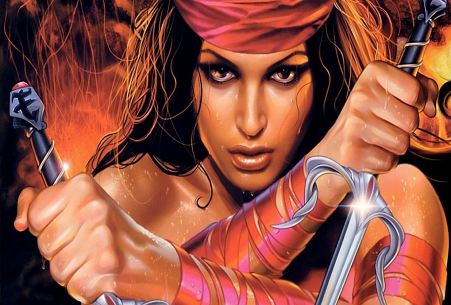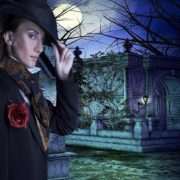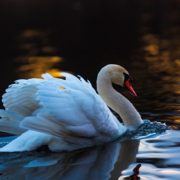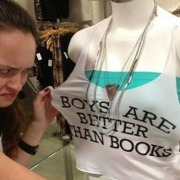How to Name a Character in Genre Fiction Novels
Writing heroes (or protagonists) is one of the first challenges that writers have to tackle when developing genre fiction novels. Since I’m re-inventing several of my protagonists for my YA Fantasy series, Guardians of Aeld, I thought you might want to peek inside my process and learn how to name a character.
Please recognize that there are as many different ways to name a character, as there are writers in the world! I personally believe that how a character is named is vitally important in genre fiction. As a reader, I am especially annoyed when I can’t pronounce the name of a character or a town (this happens a lot in Fantasy fiction.) I squirm inside if I read a name in a book or hear a name on a television show that doesn’t fit my personal idea of a strong protagonist or an evil antagonist.
For instance, I REALLY don’t like the name “Patrick Jane” for the protagonist in the television series, The Mentalist. In my mind, “Jane” doesn’t suit a strongly masculine character, and especially one with an acerbic wit.
For genre fiction heroes, my personal preference is to create character names that end with hard consonants. For heroines, I often wind up with character names that end in soft consonants or vowels. (Examples: Cord and Fancy from Texas Outlaw; Zack and Bailey from Texas Wildcat.)
On the other hand, I often break my own consonant rules for symbolic purposes. For instance, I wanted to “spoof” the name for the heroine in Scoundrel for Hire, who happens to be the heiress of a silver mining fortune. I chose the name “Silver Nichols.”
In the same book, I wanted to write a scoundrelly hero, who was named after an archangel, and I wanted his last name to be symbolic of the common man (since he was extremely poor.) Hence, I named the hero in Scoundrel for Hire Raphael “Rafe” Jones.
How do I name characters for sidekicks and confidantes?
When I have to write major secondary characters, I’m more likely to create names that imply a personality type. For instance, the most powerful practitioner of Stone Magic in Guardians of Aeld is a furry, cave-dwelling, four-foot-tall creature with horns and a prehensile tail. This member of the Trombelly race is named Odzilla Wyrdd. Her animal ally is the badger.
Do you think that a sorceress who is named Odzilla Wyrdd is going to be a conservative, pedantic thinker (like the archetypal “Stone” personality would be?) Do you think someone named Odzilla is going to play by the rules? Do you think that a female who has chosen a badger for an animal ally is going to be easy-going or mild-mannered? Do you think that a secondary character named Odzilla Wyrdd is a source of solemn dialogue and practical problem-solving?
(If you answered, “Yes” to any of the questions in the above paragraph, we need to have a serious pow-wow on the topic of symbolism!)
As I started writing about how to name a character, I realized that I don’t have a hard-and-fast rule for an antagonist or villain. Sometimes, I choose character names that sound menacing, such as “Bane Bloodfang” (the shapeshifting Wolf Chief in my Guardians of Aeld Fantasy series.) At other times, I give my psychopaths All-American Boy names -- for instance, “Aaron Townsend” from Scoundrel for Hire.
For Guardians of Aeld, I developed a complex naming convention for my Crystal Elves. All Crystelfin character names are alliterative and consist of 3 words. Thus, when the reader comes across the character name “Drakkar Dar’q Druin,” I’m hoping that the symbolic meaning is clear. The first two words are reminiscent of “dark.” The last word is pronounced similarly to “ruin.” With any luck, the reader is thinking, “This character is the equivalent of Dark Ruin.”
In Guardians of Aeld, I’m developing protagonists based on the five elements (including Aether). To illustrate my point, let’s look at the character names for my Fire archetypes. How many Fire names did my nimble Muse invent?
Dozens, actually!
First, I started brainstorming last names. I wanted to have 10 original families who counted a dragon among their ancestors. I called these families “FireSeeds” and created more than 15 last names before I whittled them down to the ones that (I hope) pack the most punch: Albright, Brand, Drago, LaForge, Arsen, Blastar, Fulgur, Ardere, Brimrock, and LaFevre.
The most important FireSeed families in my series got my favorite last names: Brand and Drago.
Then I started hunting for first names. I decided to save the really obvious Fire names (Ember, Coal, Ash, etc.) for FireSeeds who needed to be referenced on the family tree. Since these characters weren’t making a walk-on appearance in the series, I figured that making their names stereotypical would help to characterize them swiftly for the reader.
Next, I played with spellings, giving foreign-sounding first names to ethnic-sounding last names.
Here’s a small sample of the FireSeed character names that resulted:
- Torchino Drago (male) – nickname: Torch
- Charo Drago (male) – nickname: Char
- Bryton Brand (female)
- Blayze Brand (male) – the fraternal twin of Bryton
- Burnett Brand (male) – nickname: Burn
- Novarra Brand (female) – nickname: Nova
- Sindr LaFevre (female)
- Kindell Ardere (female)
Now all I have to do is figure out which last name to give my favorite male FireSeed, Torrid.
Torr’s lineage is complex, and I’m not sure whether to stick him with an alliterative name (‘cause his father was a Crystal Elf;) a Wind name, (‘cause the surname of his adopted Human family is based on Wind archetypes;) or to name him after his grandfather (who shall remain a mystery to you all, until the book is published!)
Decisions, decisions . . .
Did I mention that I put A LOT of thought into how to name a character?









